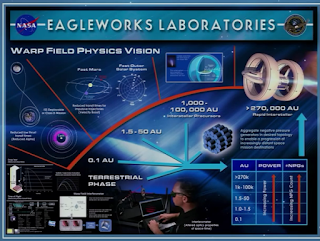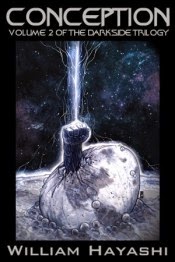 So, I like it when an author puts race in front of my eyes. I enjoy visualizing what a character looks like, race and all. When it's done correctly, the experience can deepen the reader's relationship with the character. There are some people who say that showing race in this way is racist. They enjoy reading or writing raceless, race free, or characters of color with little or no physical description. I contend that this approach is racist. Read More
So, I like it when an author puts race in front of my eyes. I enjoy visualizing what a character looks like, race and all. When it's done correctly, the experience can deepen the reader's relationship with the character. There are some people who say that showing race in this way is racist. They enjoy reading or writing raceless, race free, or characters of color with little or no physical description. I contend that this approach is racist. Read More
Featured Posts (3520)
Mayer Mason
Topics: Carbon Nanotubes, Diversity in Science, Nanotechnology, Women in Science
University of Illinois, repost: 2012 Maria Goeppert Mayer Prize recipient
Citation:
"For innovative experiments that elucidate the electronic interactions and correlations in low-dimensional systems, in particular the use of local gates and tunnel probes to control and measure the electronic states in carbon nanotubes and graphene."
Additional note: The first photograph of a Maria Goeppert Mayor Prize recipient seems to be in 1996 with Dr. Majorie Ann Olmstead, most likely made a part of the site as society got comfortable with the Internet, advances in tools and what could be posted. The prize has been awarded by APS since 1986: "To recognize and enhance outstanding achievement by a woman physicist in the early years of her career, and to provide opportunities for her to present these achievements to others through public lectures in the spirit of Maria Goeppert Mayer." Dr. Mason seems to be - at first brush of the site - the first African American woman awarded this honor.
I attended her talk at the NSBP conference in Austin, Texas. Nobel Prize next, Dr. Mason!
NobelPrize.org: Maria Goeppert Mayer Biography
 |
| Dr. Maria Goeppert Mayer, Nobel Laureate |
Topics: Diversity, Nobel Prize, Nuclear Physics, Women in Science
Born: 28 June 1906, Kattowitz (now Katowice), Germany (now Poland)
Died: 20 February 1972, San Diego, CA, USA
Affiliation at the time of the award: University of California, La Jolla, CA, USA
Prize motivation: "for their discoveries concerning nuclear shell structure"
Maria Goeppert Mayer was born on June 28, 1906, in Kattowitz, Upper Silesia, then Germany, the only child of Friedrich Goeppert and his wife Maria, nee Wolff. On her father's side, she is the seventh straight generation of university professors.
She went to private and public schools in Göttingen and had the great fortune to have very good teachers. It somehow was never discussed, but taken for granted by her parents as well as by herself that she would go to the University. Yet, at that time it was not trivially easy for a woman to do so. In Göttingen there was only a privately endowed school which prepared girls for the "abitur", the entrance examination for the university. This school closed its doors during the inflation, but the teachers continued to give instructions to the pupils. Maria Goeppert finally took the abitur examination in Hannover, in 1924, being examined by teachers she had never seen in her life.
Maria Goeppert Mayer - Facts". Nobelprize.org. Nobel Media AB 2014. Web. 3 Mar 2015. http://www.nobelprize.org/nobel_prizes/physics/laureates/1963/mayer-facts.html
Maria Goeppert Mayer Award
To recognize and enhance outstanding achievement by a woman physicist in the early years of her career, and to provide opportunities for her to present these achievements to others through public lectures in the spirit of Maria Goeppert Mayer. The award consists of $2,500 plus a $4,000 travel allowance to provide opportunities for the recipient to give lectures in her field of physics at four institutions and at the meeting of the Society at which the award is bestowed and a certificate citing the contributions made by the recipient. The award will be presented annually.
American Physical Society: Maria Goeppert Mayer Award
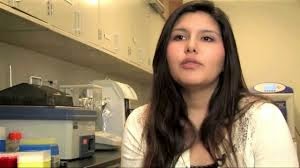.jpg) |
| Still from You Tube |
Not sure where she is in the process, but hopefully she's close to completion if not already a PhD. There is no reason at all that there aren't more women in STEM fields except for bias and discouragement along their matriculation K-12 and post secondary. See last month's post: STEM and Other Biases. There are certain things we should discourage, as in our current obsession with living the lives of "reality TV stars," and encourage more of this. Otherwise, as I said in the post, we're shooting ourselves collectively in the foot, and wondering how the hole got there!
Just when you thought you were done crying over the loss of Leonard Nimoy. You read this:
Leonard Nimoy's Advice To A Biracial Girl In 1968
It wasn't supposed to be "Leonard Nimoy + Biracial Kids Day" here at Code Switch, but the news takes you where it takes you.
BuzzFeed's Leonora Epstein uncovered this blog post from the blog My Star Trek Scrapbook, which features a letter from a 1968 issue of the defunct teen magazineFaVE! In a letter addressed to Mr. Spock, a young biracial girl laments that she doesn't fit in with either her black or her white peers.
"I know that you are half Vulcan and half human and you have suffered because of this," the girl named F.C. wrote. "My mother is Negro and my father is white and I am told this makes me a half-breed. ... I guess I'll never have any friends."
Nimoy was so moved by the letter that he responded at length in the next issue. "[Spock] said to himself: 'Not everyone will like me,' " Nimoy wrote. "But there will be those who will accept me just for who I am."
Read the whole exchange below:
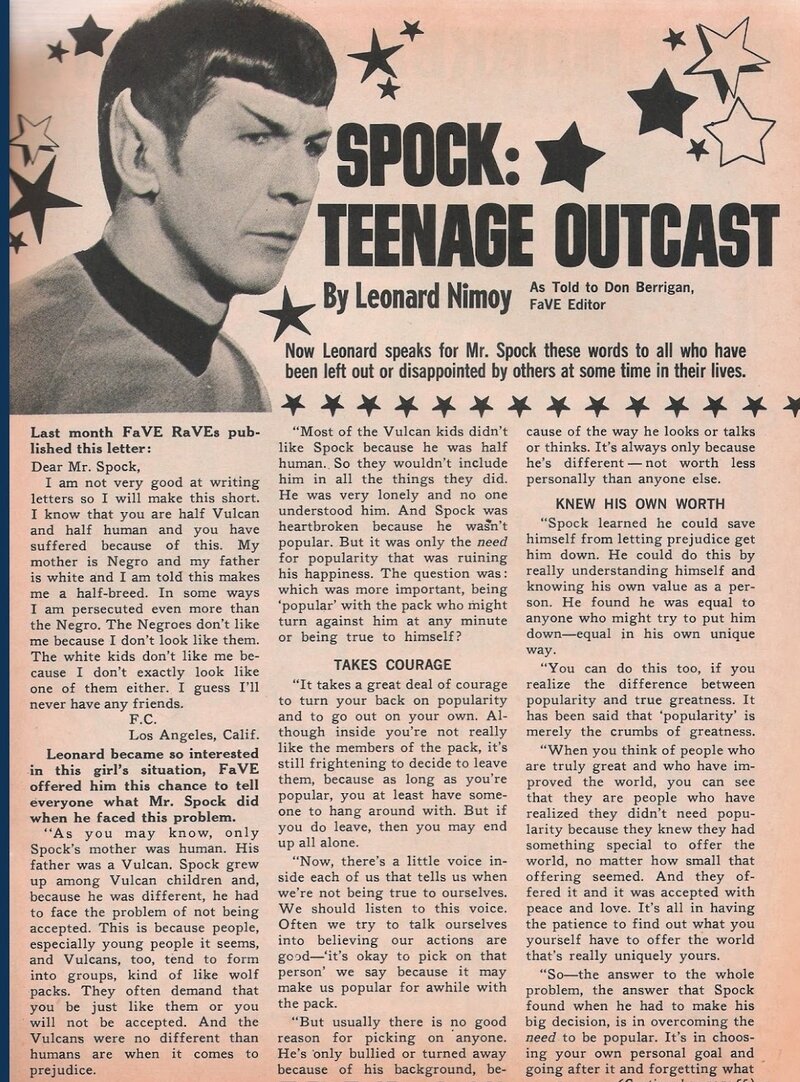
 |
| Image Source: Link Below |
Topics: Diversity, Diversity in Science, Nanotechnology, Women in Science
I believe her title these days is Dr. Mary Graham. If we want more women in STEM fields, this needs to be encouraged in the K-12 levels and post secondary, not when our collective backs are against the wall as a nation. A quote from "Capital in the 21st Century," Thomas Piketty:
"Over a long period of time, the main force in favor of greater equality has been the diffusion of knowledge and skills."
World News: SUNY NanoCollege welcomes record number of interns
 |
| Image Source: Nobel Prize - Biographical (link below) |
Topics: Chemistry, Diversity in Science, Nobel Prize, STEM, Women in Science
Synopsis
Born Maria Sklodowska on November 7, 1867, in Warsaw, Poland, Marie Curie became the first woman to win a Nobel Prize and the only woman to win the award in two different fields (physics and chemistry). Curie's efforts, with her husband Pierre Curie, led to the discovery of polonium and radium and, after Pierre's death, the development of X-rays. She died on July 4, 1934.
Early Life
Maria Sklodowska, better known as Marie Curie, was born in Warsaw in modern-day Poland on November 7, 1867. Her parents were both teachers, and she was the youngest of five children. As a child Curie took after her father, Ladislas, a math and physics instructor. She had a bright and curious mind and excelled at school. But tragedy struck early, and when she was only 11, Curie lost her mother, Bronsitwa, to tuberculosis.
A top student in her secondary school, Curie could not attend the men-only University of Warsaw. She instead continued her education in Warsaw's "floating university," a set of underground, informal classes held in secret. Both Curie and her sister Bronya dreamed of going abroad to earn an official degree, but they lacked the financial resources to pay for more schooling. Undeterred, Curie worked out a deal with her sister. She would work to support Bronya while she was in school and Bronya would return the favor after she completed her studies. [1]
1. Biography.com: Marie Curie
2. American Institute of Physics: Marie Curie: Her Story in Brief
3. NobelPrize.org: Marie Curie - Biographical
Don't lament the lost days of cutting your fingers on pristine new novels or catching a whiff of that magical, transportive old book smell just yet! A slew of recent studies shows that print books are still popular, even among millennials. What's more: further research suggests that this trend may save demonstrably successful learning habits from certain death. Take comfort in these 9 studies that show that print books have a promising future:
Basically I just put pen to paper when I begin to write but I would say I mostly write in the vein of Sci/fantasy, time travel (which probably allows me to touch on almost everything anyway), soft and certainly metaphysical. Naturally I have the Diaspora element in there - as active and reflective.
With "First Lost Risen" - which came out of a poem I wrote - I wanted to bring Jamaica into sci/fantasy. Guess I touched a lot of nerves in one book ...
Thanks for the "chat" the other night guys. It helped me to focus some.
Looking forward to listening to Genesis on You Tube! A lot going on here.
Bless
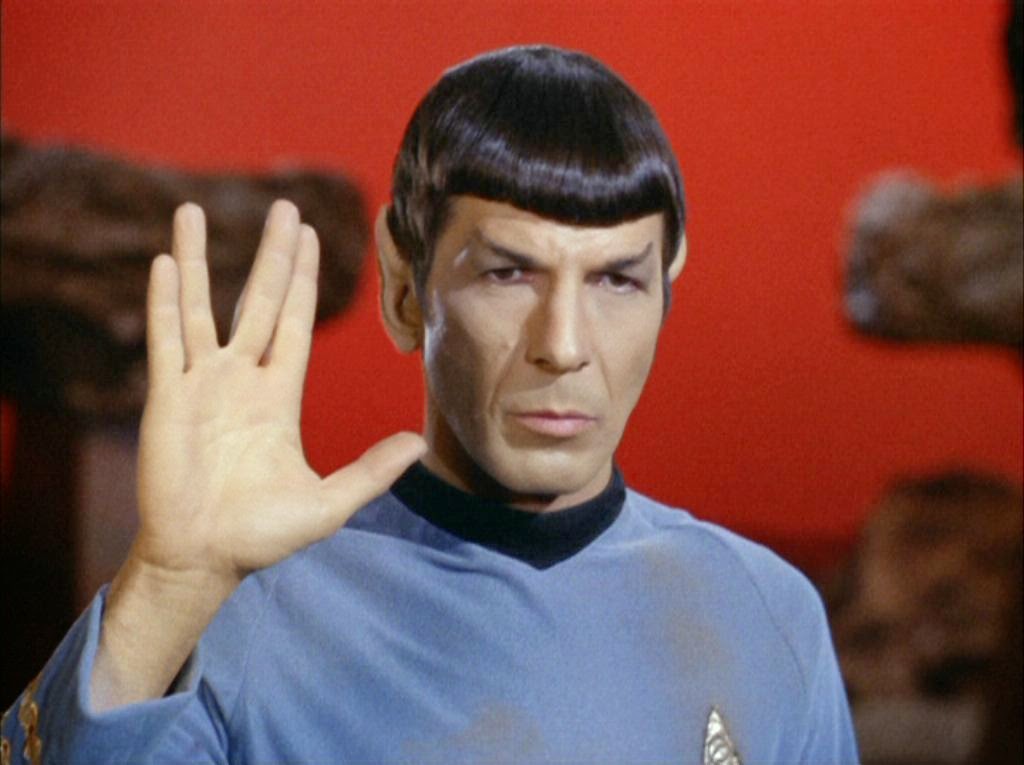 |
| Image Source: Memory Alpha Wiki |
Topics: Boldly Go, Civil Rights, Leonard Nimoy, Science Fiction, Space Travel, Star Trek
In memory of Leonard Nimoy: March 26, 1931 - February 27, 2015.
"Memory Alpha": When you lived in the designated reservation also known as a ghetto, there are "norms" that your very existence defied: it's not "normal" to have an interest in science and math; to watch documentaries, Mr. Wizard; Mutual of Omaha's Wild Kingdom; The Undersea World of Jacques Cousteau. And, by gosh, you didn't watch Star Trek nor the moon landing.
Now, we have web sites that celebrate black nerds. There's even a word for it now: blerds. Not so in the 60's. You were then just weird, oddball, outcast, different: the "other."
Despite the demonstrably miraculous technologies your fictional century had mastered, there was still an obvious prejudice even between space faring species Gene Roddenberry and the scriptwriters couldn't ignore. Part of the attraction and charm of Star Trek (especially for Dr. King) is we might just learn to get along with one another and survive as a species; that we might tolerate differences especially when it is solidly in our faces with bowled haircut; arched eyebrows; pointed ears and green-tinged skin. You played a half-human: Vulcan and Earth coursed in your copper veins; your character balanced and respected two cultures because of the parents Spock loved (though logic wouldn't let him admit it). You were "diversity" before the word was re-purposed in the lexicon.
You will be lauded, celebrated and missed by Star Trek fans worldwide. I know the totality of your body of work is far beyond the franchise as poet, director; writer, song writer and more. It's not uncommon nor unfair for actors to not wish to be typecast, i.e. known for only one role. However sir, this role was significant to straightening the backs of many: you were the "other," a man artistically crafted between two worlds to struggle with what than meant, and we struggled with you. You allowed those of us that felt "different" to feel that it's OK to be that way. That our nerd culture was beyond Melanin or for many, sexual orientation: all our values, our histories, ourselves have purpose and meaning for our brief time as blades of grass in the light. We thoroughly enjoyed your time and your talents in it with all of us.
As you attain escape velocity, and warp to meet Gene, Majel Barrett and James Doohan, know that "I have been, and will always be"...your fan.
For your Katra, peace, and long life...live long and prosper, Leonard Nimoy.
\\//_
 |
| Brainy Quotes: Frederick Douglass, above and other quotes at Good Reads |
Topics: #BlackLivesMatter, Denouement, Diversity, Diversity in Science, Women in Science
...or, women for that matter!
To the point: it is quite obvious by expectation, (some) low educator motivation that many of us are subtly "herded" into what was once challenged vocations - sports, for example - and away from science, technology, engineering and mathematics fields. Such puts one in the position to literally "lift themselves [by their own academic] bootstraps" out of poverty, into prosperity, self-worth, and yes: power. "Knowledge IS power," and thus you are not encouraged to take Advanced Placement classes - though anyone can request them - you're stressed out over ACT/SAT/Standardized ________ to graduate from high school. Dr. Lani Guinier's article should be a breath of fresh air and an eye-opener. Such hurdles can be prepared for, and overcome (links below).
Personal note: I have worked in the semiconductor industry since 1989. In 1974, my middle school science teacher - upon my asking him a question on linear expansion - called me a "dummy." My parents asked him to explain himself, which he did in sweaty apology in front of the principal to save his job. In 1979, my high school counselor was pretty adamant that I should "graduate early" and go into the military; that I did not have the academic preparation to major in engineering in college, as it seems she advised most of my African American classmates (only). I visited my high school in 1983 a college AFROTC junior and an alumni Air Force JROTC graduate. I had been a cadet colonel and Brigade Commander of the Winston-Salem/Forsyth County school district, a position in my high school freshman year in 1976, the BC then said: "your kind will never get to this rank!" (I was also personally threatened by the Klan via passed crude letter: first, for "getting to the rank," then with showing up for the citywide Brigade Review parade, my last function as cadet commander. This was of considerable concern as I wasn't too far in time or mileage from their infamous shootout in Greensboro.) Upon seeing her, I reminded my counselor of our conversation: that she suggested I graduate early; that I wasn't prepared to be an engineering student. I told her I was a in my junior year in Engineering Physics at North Carolina A&T State University, and that I was going to be a commissioned officer. She quickly found something else to do, and like the Neanderthal my freshman year, found herself quite wrong and at a loss for words. How many have been discouraged by words of ignorant and unqualified judges to jettison their dreams? Don't let ANYONE steal your dreams from you.
I have spoken hopefully, to the young and given them pride, a sense of history and accomplishment. I have hopefully spoken to their appreciation of diversity, as many have friends outside of their culture without the overt impediments of previous generations (we could all follow your example).
There is much more to do in astronautics, astrophysics, architectural and civil engineering, computer science, electrical engineering, environmental engineering, industrial engineering energy independence, food consumption, medicine, ophthalmology, physics, robotics and nanotechnology. We need your minds; we need your brilliance, we need your energy: we need your confidence. Think of the barriers you've seen over the month surmounted during times when we couldn't even drink at a decent drinking fountain, or voting could get you killed. Look at the archives of previous February postings. Think of your own recent history: Trayvon Martin; Jordan Davis; Renisha McBride; Eric Garner; Michael Brown. Marching and now, posting to social media is a kind of activism that temporarily makes you feel good: the other is to tackle the books. As Richard Feynman and his fellow students did, quiz one other on your understanding of all your subjects, science and math definitely. "Outsourcing" should be a last resort in a global economy, and you don't want to make it easy to do so by not being prepared to compete.
Register to vote when you turn 18, vote in midterm and presidential elections and don't let anyone stand in the way of your well-fought for, blood-spilled for right of citizenship, or tell you "it's not worth it"; "it doesn't matter"; "the election is already decided." Active democracies should have elections decided by mere hundreds of votes in close elections; elected officials should not be cowed by 5:1 lobbyists with wheelbarrows of cash, or violent mobs with torches and pitchforks, but with voter registration cards constituents are willing to use to hold them accountable. It stops mattering when you allow the moneyed few to dictate the direction of the nation, and the dreams of the many: on a personal level, a lot "dreams deferred"* may sadly, (indefinitely) be yours and this nation's. Spend less time on social media and million player games and master science, technology, engineering, mathematics and above all: critical thinking to question those in authority. You can do it! This country needs you: the WORLD needs you...to straighten your backs, and step out into the light.
Ending the month how we began it:
"Change does not roll in on the wheels of inevitability, but comes through continuous struggle. And so we must straighten our backs and work for our freedom. A man can't ride you unless your back is bent."
Dr. Martin Luther King, Jr - and, a seldom-quoted riff (embed) below...
*What happens to a dream differed?
Does it dry up like a raisin in the sun?
Or, fester like a sore, and then run?
Does it stink like rotted meat,
Or crust and sugar over like a syrupy sweet?
Maybe it just sags like a heavy load...
...or does it explode? Langston Hughes
Don't explode: ascend, and give light to your dreams!
Kaplan: Kaplan SAT Test Prep
Khan Academy: SAT Test Prep
Edrolo: Online SAT Test Prep
SAT College Board: SAT Practice
Magoosh: GRE Prep and Practice
ETS: Prepare for the GRE General Test
GRE Subject Test Tools
My GRE Tutor: Practice General Exams
Manhattan Prep: Top 5 GRE Study Tips
More than 99% of all the species that have ever lived on our planet are now extinct, and while the majority of these die-offs can be attributed to competition or failure to adapt, many perished during dramatic cataclysmic events. The fossil record shows us that these mass extinctions seem to occur periodically in cycles of approximately 26 to 30 million years—which, interestingly, is similar to the amount of time it takes our sun to bob up and down through the galactic disc and cross the center line of the Milky Way.
This region, known as the galactic plane, is crowded with clouds of dust and gas which could disturb space debris within our solar system and send some hurtling towards our planet, which would fit in with some of the mass extinctions. However, according to new research, there could be something else at play: dark matter.
Since rumors and reports first revealed that director Josh Trank was looking at a non-white actor to play Johnny Storm a.k.a. Human Torch in Twentieth Century Fox’s reboot of Fantastic Four, the project – which already had a stiff uphill climb against expectations – has unavoidably been a subject of controversy. It didn’t help skeptical fans that the FF marketing campaign didn’t begin until a few weeks ago (with good reason though – see why here).
Josh Trank began early Fantastic Four development even before his first feature Chronicle (which got him the FF director’s chair) opened in theaters, and his original ideas for a modern take on the FF and casting remain largely intact. The plan was always to reboot the franchise by using the Ultimate Fantastic Four comics as a source of inspiration, especially when it comes to the younger team dynamic and science fiction aspects of it. The other part of the plan was to cast Miles Teller andMichael B. Jordan as Mr. Fantastic and Human Torch, respectively.
To support wireless communications at higher frequencies offering more channel capacity, NIST engineer Kate Remley led development of this new 94 gigahertz calibrated signal source for testing receivers and other devices. Credit: NIST
Topics: Electrical Engineering, 5G Cellular, Wireless Technology, Women in Science
Smartphones and tablets are everywhere, which is great for communications but a growing burden on wireless channels. Forecasted huge increases in mobile data traffic call for exponentially more channel capacity. Boosting bandwidth and capacity could speed downloads, improve service quality, and enable new applications like the Internet of Things connecting a multitude of devices.
To help solve the wireless crowding conundrum and support the next generation of mobile technology—5G cellular—researchers at the National Institute of Standards and Technology (NIST) are developing measurement tools for channels that are new for mobile communications and that could offer more than 1,000 times the bandwidth of today’s cell phone systems.
Like pioneers who found land by going west, telecom researchers can find open spectrum by going up—to higher frequencies. Mobile devices such as cell phones, consumer WiFi devices and public safety radios mostly operate below 3 gigahertz (GHz) (see infographic). But some devices are starting to use fast silicon-germanium radio chips operating at millimeter (mm) wavelengths above 10 GHz. Researchers at NIST and elsewhere are eyeing channels up to 100 GHz and even beyond.
New NIST Tools to Help Boost Wireless Channel Frequencies and Capacity, Laura Ost
Topics: Dark Matter, Diaspora, Science Fiction, Speculative Fiction, Women in Science and Speculative Fiction
Song of Blood & Stone:
Earthsinger Chronicles Book 1
By Leslye Penelope
Orphaned and alone, Jasminda is an outcast in her homeland of Elsira, where she is feared for both the shade of her skin and her magical abilities. When ruthless soldiers seek refuge in her isolated cabin, they bring with them a captive – an injured spy who steals her heart.
More at: http://blacksciencefictionsociety.com/page/book-of-the-month
Author site: http://lpenelope.com/books/song-of-blood-and-stone/
Amazon.com Review
Dark matter: the nonluminous matter, not yet detected, that nonetheless has detectable gravitational effects on the universe.
Dark matter: the Afro-American presence and influences unseen or unacknowledged by Euro-American culture.
Dark Matter: the first anthology to illuminate the presence and influence of black writers in speculative fiction, with 25 stories, three novel excerpts, and five essays.
* * * * *
Though Black women's literature spans every genre imaginable, the visibility of Black women in speculative fiction is often low. These women create work that not only speaks to their experiences but imagines new worlds and possibilities. Their stories take us on journeys. And while though the work may offer temporary moments of escape, when we return we're better able to interpret our own place in the world. If you're interested in taking the trip, you'll want to check out these Black women science fiction writers. For Harriet
Dr. Stephen Hawking of Cambridge University alongside illustrations of a black hole and an event horizon with Hawking Radiation. He continues to engage his grey matter to uncover the secrets of the Universe while others attempt to confirm his existing theories. Credit: Photo: BBC, Illus.: T.Reyes
Topics: Big Bang, Black Holes, Einstein, DSR, Gravity, Spacetime, Special Relativity
We've come a long way in 13.8 billion years; but despite our impressively extensive understanding of the Universe, there are still a few strings left untied. For one, there is the oft-cited disconnect between general relativity, the physics of the very large, and quantum mechanics, the physics of the very small. Then there is problematic fate of a particle's intrinsic information after it falls into a black hole. Now, a new interpretation of fundamental physics attempts to solve both of these conundrums by making a daring claim: at certain scales, space and time simply do not exist.
Let's start with something that is not in question. Thanks to Einstein's theory of special relativity, we can all agree that the speed of light is constant for all observers. We can also agree that, if you're not a photon, approaching light speed comes with some pretty funky rules – namely, anyone watching you will see your length compress and your watch slow down.
But the slowing of time also occurs near gravitationally potent objects, which are described by general relativity. So if you happen to be sight-seeing in the center of the Milky Way and you make the regrettable decision to get too close to our supermassive black hole's event horizon (more sinisterly known as its point-of-no-return), anyone observing you will also see your watch slow down. In fact, he or she will witness your motion toward the event horizon slow dramatically over an infinite amount of time; that is, from your now-traumatized friend's perspective, you never actually cross the event horizon. You, however, will feel no difference in the progression of time as you fall past this invisible barrier, soon to be spaghettified by the black hole's immense gravity.
So, who is "correct"? Relativity dictates that each observer's point of view is equally valid; but in this situation, you can't both be right. Do you face your demise in the heart of a black hole, or don't you? (Note: This isn't strictly a paradox, but intuitively, it feels a little sticky.)
And there is an additional, bigger problem. A black hole's event horizon is thought to give rise to Hawking radiation, a kind of escaping energy that will eventually lead to both the evaporation of the black hole and the destruction of all of the matter and energy that was once held inside of it. This concept has black hole physicists scratching their heads. Because according to the laws of physics, all of the intrinsic information about a particle or system (namely, the quantum wavefunction) must be conserved. It cannot just disappear.
Why all of these bizarre paradoxes? Because black holes exist in the nebulous space where a singularity meets general relativity – fertile, yet untapped ground for the elusive theory of everything.
Enter two interesting, yet controversial concepts: doubly special relativity and gravity's rainbow.
Phys.org:
Space-time theory may reconcile black hole conundrum
Vanessa Janek, Universe Today
Topics: African Heritage, Civil Rights, Négritude Movement, Star Trek
Bertrade Ngo-Ngijol Banoum –Lehman College
Négritude is a cultural movement launched in 1930s Paris by French-speaking black graduate students from France's colonies in Africa and the Caribbean territories. These black intellectuals converged around issues of race identity and black internationalist initiatives to combat French imperialism. They found solidarity in their common ideal of affirming pride in their shared black identity and African heritage, and reclaiming African self-determination, self–reliance, and self–respect. The Négritude movement signaled an awakening of race consciousness for blacks in Africa and the African Diaspora. This new race consciousness, rooted in a (re)discovery of the authentic self, sparked a collective condemnation of Western domination, anti-black racism, enslavement, and colonization of black people. It sought to dispel denigrating myths and stereotypes linked to black people, by acknowledging their culture, history, and achievements, as well as reclaiming their contributions to the world and restoring their rightful place within the global community.
Sourced from
"Africana Age: African & African Diasporan Transformations in the 20th Century," New York Public Library
http://www.talkshoe.com/tc/127374
An interview of Abyssinia Media Group CEO, Carles "CJ" Juzang with GENESIS RADIO with host William Hayashi. Recorded Friday February 20, 2015. A BLACK SCIENCE FICTION SOCIETY Production.
Topics: FTL, Space Exploration, Spacetime, Star Trek, Wormholes
Since the 1994 paper by Miguel Alcubierre (and the physics caveats to attaining it), there has been some interest in this area just because of the vastness of interstellar space and the limitations since the Mercury Space Program of Newtonian Space Travel.
Also, it is unlikely we will come in contact with 5-dimensional hyper-humans that want to see to their ancestors' survival by popping up a wormhole next to Saturn (note: not a spoiler to "Interstellar" by now).
The problem being addressed is species survival - dinosaurs were animals with small brains that had a really BAD day 65 million years ago. We homo sapiens (Latin: "wise man") are not. With our demand for energy and resources going unabated, and the fact that our neighboring planets are so far uninhabitable, we are reduced to several options:
1. Conservation and resource restrictions: This has proven untenable as our economy at this point in history has been based on scarcity and charging a premium for that scarcity.
2. Plus, we'd have to forgo our Victorian compunctions regarding birth control, and stop encouraging both large families and early teen motherhood by ignorance of the same.
3. Terra-forming other planets: Which, I guess is the attraction to Mars and the four presumed volunteers to a one-way mission to the Red Planet (good luck). Mars has no breathable oxygen/nitrogen atmosphere; it is roughly 1/3 g, so bones would lose calcium and muscles would atrophy; temperatures can dip below -87 degrees Celsius (or, -124.6 degrees Fahrenheit). Getting there would take 150-300 days unless the VASIMR plasma rocket is available by 2020.
4. Conversion to non-fossil fuels based energy infrastructure: see #1.
Alpha Centauri is 4.367 light years away, that's if we had a craft that could attain 99.9999% of c, the speed of light. It sounds ideal until you take into account the affects of time dilation: that would be roughly 3,088 years for any twins our astronauts had back on Earth. The "right stuff" would be similar to those embarking on Mars One - not just the vastness of space, but of time itself as a gulf.
That's also if there's a habitable but largely uninhabited planet around its twin or triple star system. It would take our Newtonian conventional rockets 165,000 years to reach it (75,000 by Dr. White's comparison to Voyager), enough time and 6,600 generations in the first case for our descendants to forget WHY they were sent there in the first place. If they survive at all, humanity would be decidedly different than the breed that left the cradle of Sol and Earth Millennium ago. What is now us, would be a distant or forgotten memory.
Whether eventually warp or non-causality impacting relativistic speeds, humanity will have to decide it wants to travel to another world, and try not to replicate the mistakes we've made on this one on the next.
Topics: Diaspora, Space Exploration, Speculative Fiction
Conception, Volume Two of the Darkside Trilogy
by William Hayashi
Conception, Volume Two of the Darkside Trilogy tells the story of the extraordinary people who built their lunar secret habitat (chronicled in Discovery: Volume 1 of the Darkside Trilogy) and how they came together. These people, exclusively Black, conceive of, design and construct technological marvels that the collective scientific minds of the entire world cannot duplicate. And how, one might ask, did they manage to do what no one had ever done before, over and over and over again in so many disciplines, and in so many ways?
More at:
http://blacksciencefictionsociety.com/page/book-of-the-month
http://www.thedarksidetrilogy.com/

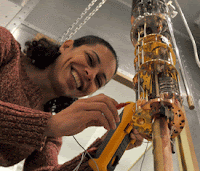





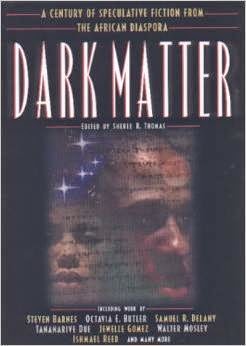.jpg)


